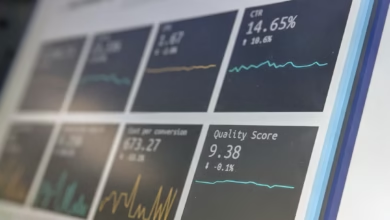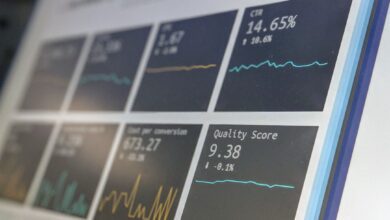Mastering High-Frequency Trading: Speed, Technology, and Essential Strategies for Modern Traders

In today's fast-paced financial landscape, the fusion of technology and speed has revolutionized the way traders approach the markets. High-frequency trading (HFT) stands at the forefront of this transformation, utilizing advanced algorithms and cutting-edge technology to execute orders within microseconds. As trading strategies evolve, HFT has emerged as a powerful tool for investors across various markets, including stock trading, forex trading, and even crypto trading. This article delves into the intricacies of high-frequency trading, exploring how traders leverage speed to gain a competitive edge in day trading, swing trading, and beyond. We will examine the essential trading strategies that underpin successful HFT, such as scalping and arbitrage trading, while also discussing the critical role of risk management and market analysis in navigating this complex landscape. Whether you're an experienced trader or new to online trading platforms, understanding high-frequency trading will equip you with the insights needed to thrive in the dynamic world of derivatives trading, commodities trading, and more. Join us as we uncover the secrets of HFT and how it reshapes the future of trading.
- 1. Understanding High-Frequency Trading: The Intersection of Technology and Speed in Modern Trading
- 2. Essential Trading Strategies for High-Frequency Trading: From Scalping to Arbitrage
- 3. The Role of Risk Management and Market Analysis in Successful High-Frequency Trading
1. Understanding High-Frequency Trading: The Intersection of Technology and Speed in Modern Trading
High-Frequency Trading (HFT) represents a revolutionary approach in the realm of stock trading and beyond, leveraging cutting-edge technology and lightning-fast execution to capitalize on minute price discrepancies. At its core, HFT is a subset of algorithmic trading, where advanced algorithms execute numerous orders at incredibly high speeds, often in fractions of a second. This intersection of technology and speed has transformed not just stock trading, but also forex trading, options trading, futures trading, and even commodities trading.
In modern trading environments, the significance of speed cannot be overstated. HFT firms utilize sophisticated algorithms and high-speed data networks to analyze market conditions and execute trades before human traders can even react. This capability enables traders to engage in strategies such as arbitrage trading—taking advantage of price differentials across markets—and scalping, where small, rapid profits are made from minor price changes.
Moreover, HFT impacts various trading markets, including crypto trading and index trading, by providing liquidity and contributing to tighter bid-ask spreads. However, it also raises questions regarding risk management and market stability, especially during periods of volatility. Traders engaging in high-frequency strategies must implement robust risk management techniques to mitigate potential losses that can arise from market fluctuations.
The landscape of online trading platforms has evolved to accommodate these rapid trading strategies, offering features that cater to both high-frequency and day trading. Traders are increasingly adopting diverse trading strategies, such as swing trading and copy trading, to optimize their approaches. Additionally, understanding market analysis—both technical and fundamental—becomes crucial for traders involved in HFT, as they must constantly adapt to changing market conditions.
As trading psychology plays a vital role in decision-making, high-frequency traders must remain disciplined, leveraging their technological advantages while managing the psychological pressures of rapid decision-making. With the rise of leverage trading and margin trading, traders must also be aware of the implications these strategies have on risk, especially in derivatives trading, CFD trading, ETF trading, and binary options.
In summary, high-frequency trading stands at the forefront of modern trading, harnessing technology and speed to create opportunities across various asset classes. By understanding the dynamics of HFT and its broader implications on trading strategies, traders can better navigate this fast-paced environment, ensuring they remain competitive in the ever-evolving financial markets.
2. Essential Trading Strategies for High-Frequency Trading: From Scalping to Arbitrage
High-Frequency Trading (HFT) relies on advanced technology and algorithms to execute trades at lightning speed, making it essential for traders to adopt effective strategies to capitalize on market opportunities. Here, we explore essential trading strategies that are commonly employed in high-frequency trading, including scalping and arbitrage.
One of the most prevalent strategies in HFT is **scalping**. This method involves making numerous small trades throughout a trading session to exploit minor price fluctuations in stocks, forex, or commodities. Scalpers aim to accumulate small profits on each trade, which can quickly add up given the high volume of transactions. This strategy requires a keen understanding of **technical analysis** to identify entry and exit points rapidly, along with strict **risk management** protocols to guard against potential losses.
Another critical strategy is **arbitrage trading**, which takes advantage of price discrepancies between different markets or trading instruments. For instance, a trader might buy an asset in one market where it's undervalued and simultaneously sell it in another market where it’s overvalued, securing a profit from the difference. In the world of **index trading**, this could involve exploiting variations in index futures and their underlying stocks. Arbitrage opportunities can often be fleeting, necessitating the speed and precision that high-frequency trading offers.
Other strategies worth noting include **day trading** and **swing trading**, where traders look to capitalize on short-term market movements. Day trading focuses on closing positions within the same day, while swing trading aims to capture gains over several days. Both strategies can benefit from the speed of HFT, allowing traders to react quickly to market changes.
Moreover, in the context of **algorithmic trading**, traders develop sophisticated algorithms that automate the execution of trades based on predefined criteria. This approach not only enhances efficiency but also minimizes human error, which is crucial in fast-paced environments like **futures trading**, **crypto trading**, or **options trading**.
Ultimately, successful high-frequency trading hinges on a combination of rapid execution, effective market analysis, and disciplined trading psychology. By leveraging these essential trading strategies, traders can navigate the complexities of modern financial markets while maximizing their potential for profit.
3. The Role of Risk Management and Market Analysis in Successful High-Frequency Trading
In the fast-paced world of high-frequency trading (HFT), effective risk management and thorough market analysis are paramount to achieving success. HFT relies on sophisticated algorithms and technology to execute trades at lightning speed, often in fractions of a second. However, the rapid nature of this trading style can expose traders to significant risks if not managed correctly.
Risk management plays a crucial role in high-frequency trading by helping traders mitigate potential losses and protect their capital. Traders must implement robust strategies that account for volatility, market fluctuations, and unexpected events. This involves setting strict parameters for leverage trading and margin trading, ensuring that they do not overextend their positions. Additionally, employing stop-loss orders can help limit losses during sudden market shifts, a common occurrence in stock trading, forex trading, and crypto trading.
Market analysis is equally essential for successful HFT. Traders rely on both technical analysis and fundamental analysis to make informed decisions. Technical analysis, which involves evaluating historical price movements and chart patterns, is particularly valuable in high-frequency environments where timing is critical. Traders often use indicators such as moving averages, Bollinger Bands, and RSI to identify potential entry and exit points swiftly. On the other hand, fundamental analysis provides insight into market trends and economic indicators, allowing traders to anticipate price movements in derivatives trading, commodities trading, and index trading.
Additionally, trading psychology cannot be overlooked in the realm of HFT. The ability to remain composed under pressure is vital for traders who engage in scalping and other rapid trading strategies. Emotions can lead to impulsive decisions that may jeopardize trading strategies, making it essential for traders to cultivate a disciplined mindset.
In summary, successful high-frequency trading hinges on effective risk management and comprehensive market analysis. By integrating sound trading strategies with advanced algorithms, traders can navigate the complexities of online trading platforms and capitalize on fleeting opportunities in the market, whether in options trading, futures trading, or binary options. Emphasizing these elements not only improves trading performance but also enhances the overall sustainability of a trading approach in the competitive landscape of HFT.
In conclusion, high-frequency trading (HFT) represents a significant evolution in the landscape of trading, merging cutting-edge technology with the essential principle of speed. As traders engage in stock trading, forex trading, options trading, or any other form of derivatives trading, understanding the nuances of HFT can offer a competitive edge. By employing essential trading strategies such as scalping and arbitrage trading, traders can capitalize on fleeting market opportunities.
However, the success of high-frequency trading is not solely reliant on speed; robust risk management and thorough market analysis are crucial components that can make or break a trading strategy. Whether one is involved in day trading, swing trading, or exploring the realms of crypto trading and commodities trading, a solid foundation in technical and fundamental analysis is imperative.
Moreover, trading psychology plays a vital role in navigating the fast-paced environment of HFT. As traders leverage margin trading and CFD trading, they must remain aware of their emotional responses and decision-making processes.
Ultimately, as the trading landscape continues to evolve with advancements in technology and algorithmic trading, embracing high-frequency trading techniques while maintaining a strong focus on risk management and market analysis will be key to achieving sustained success. For traders looking to enhance their strategies, online trading platforms that support these advanced methodologies can provide invaluable resources. By continuously refining their approach and adapting to market dynamics, traders can harness the full potential of high-frequency trading in a rapidly changing financial environment.
References:
– Author, A. (Year). Title of the source. Retrieved from URL
– Author, B. (Year). Title of the source. Retrieved from URL
– Author, C. (Year). Title of the source. Retrieved from URL





